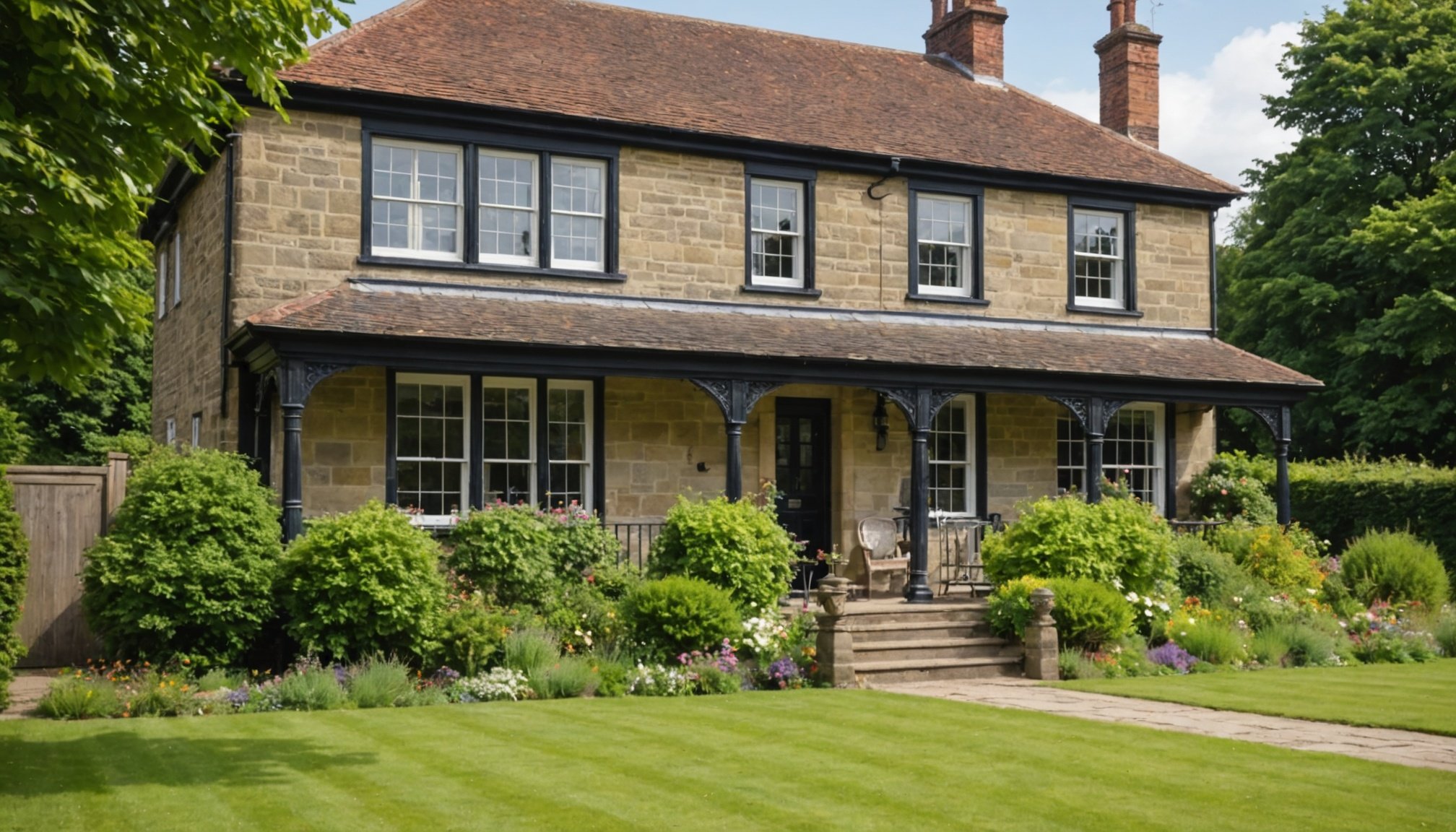Understanding Historic Homes Financing
Financing historic homes presents unique challenges that require special consideration. Prospective buyers must navigate the particular classifications that these properties fall under, such as Grade I or Grade II. This classification can significantly impact mortgage options and historic property loans.
Understanding these classifications is crucial because they often come with legal restrictions and obligations regarding modifications and renovations. Buyers need to be aware of these constraints when applying for financing, as they influence the mortgage options available. Moreover, historic homes often require specific preservation and restoration measures, which can add to the complexity of securing a loan.
Also to discover : Unlocking homeownership: a guide to mortgage options for first-time buyers in rural uk areas
Lenders will likely assess the historical significance and the condition of the property. This involves thorough property condition assessments to ensure that the home maintains its historic integrity during the financing period. Additionally, engaging with lenders familiar with historic properties is beneficial as they are more adept at navigating these challenges.
Ultimately, understanding the nuances of financing historic homes is essential to successfully obtaining mortgage types and loans tailored to maintain the unique character and requirements of these cherished properties.
Also to read : What should UK property buyers know about insurance during the purchasing process?
Types of Mortgages for Historic Homes
When it comes to historic home mortgages, understanding the array of products available is crucial. Various mortgage types can accommodate the special requirements of these properties, thus ensuring preservation while addressing financial needs.
Standard Mortgages
Standard mortgages are a prevalent choice for financing historic homes. These mortgage types offer predictable payment structures and can be a fit for those with a robust financial history. They facilitate acquisition but might limit funds for property-sensitive renovations.
Renovation Loans
Renovation loans cater to buyers needing funds for restoring a property’s original charm. These loans merge purchasing costs and renovation expenses into one package, making them ideal for historic homebuyers. They often require detailed renovation plans to ensure the property’s integrity is maintained.
Government-Backed Loans
For those seeking financial ease, specialized loans backed by the government are advantageous. These programs, like the FHA 203(k), provide resources to maintain and restore historic homes. They ensure that preservation standards are met, often providing borrowers with flexible terms and reduced borrowing risks.
By recognising and selecting the right financing options, prospective homeowners can safeguard the unique character and structural integrity of their historic dwellings.
Eligibility Criteria for Financing
Securing financing for a historic home requires fulfilling specific mortgage eligibility requirements that can differ from those for modern properties. Lenders usually have unique property requirements for buildings with historical significance, taking into account both their structural condition and preservation needs.
First, a comprehensive property condition assessment is often mandatory. This ensures the historic home not only retains its architectural integrity but also meets the lender’s eligibility threshold. As historical properties can exhibit age-related wear, lenders may demand proof of necessary repairs or restoration plans.
Financial qualifications for applicants also hold sway in the approval process. Although general lending criteria apply, borrowers must demonstrate capability to handle both mortgage payments and potential restoration costs. This financial robustness is critical for securing tailored financing that respects the character and constraints of historic homes.
Understanding these financing criteria can significantly smooth the path towards mortgage approval, ensuring that prospective buyers can effectively navigate the historic home financing landscape. For applicants serious about historic properties, meeting these standards is crucial for accessing appropriate funds and maintaining the historical essence of their potential new home.
Lender Requirements and Considerations
When considering financing historic homes, understanding lender requirements is pivotal. Lenders often require a comprehensive understanding of both the property’s historical integrity and its current condition. Documentation proving adherence to lender requirements, like detailed assessments of the property’s state, is essential.
Facilitating the mortgage approval process for historic properties involves addressing specific challenges, such as ensuring the preservation of architectural details. Applicants should gather extensive documentation, including any permits related to past renovations and historical assessments. This also involves understanding and presenting the potential cost of required restorations to maintain the property’s historical stature.
Preparation is key. Prospective buyers must provide proof of financial readiness not only for regular mortgage payments but also for any restorations demanded by the property’s historical status. This is crucial for navigating the delicate underwriting process, where historic properties’ unique attributes can often complicate proceedings.
Engaging with professionals who understand the nuances of financing older homes can aid in organising requisite documentation, thereby enhancing the likelihood of securing approvals. Lenders focus on ensuring that financed properties retain their historical value, aligning with the homeowners’ commitment to preservation.
Legal Considerations in Financing Historic Homes
Navigating the legal aspects of financing historic homes demands a solid understanding of local preservation laws. These laws often contain strict guidelines on property modifications, impacting potential mortgage legalities. Buyers must familiarise themselves with these regulations to avoid unforeseen challenges that could jeopardise their financing efforts.
One primary concern involves obtaining the necessary permits for renovations. Historic homebuyers often face constraints not encountered with modern properties, primarily because of restrictions aimed at ensuring architectural integrity. Understanding these permit processes is crucial in planning both financially and practically.
Moreover, conservation easements can have significant implications on mortgage options. Easements are legal agreements placing limitations on property alterations to protect its historic character. While they help preserve heritage, they also influence the property’s potential resale value and financing options.
These legal considerations underscore the importance of being well-prepared and informed when embarking on the journey of purchasing a historic home. By ensuring compliance with historic home regulations and anticipating legal challenges, prospective buyers can safeguard their investments and contribute to preserving cultural landmarks.
Grants and Assistance Programs
Securing financial aid for the restoration of historic homes holds tremendous potential benefits. Various historic home grants are available to ease the financial burden associated with preserving these unique properties. These grants are pivotal in assisting homeowners in maintaining and restoring the historical and architectural integrity of their homes.
Initiating the process involves thorough research. Prospective applicants should explore both federal and local funding options. Government bodies, such as the National Historic Preservation Fund, and private organizations often provide financial assistance to support preservation efforts. Additionally, understanding eligibility criteria specific to each program is essential for successful applications.
The journey doesn’t end at finding these grants. Knowing how to apply effectively is crucial. Applications typically require detailed proposals outlining the planned restoration work and its historical significance. Demonstrating commitment to meeting preservation standards can significantly enhance the chances of securing funding.
Case studies illustrate the transformative impact of these programs. Successful projects, rooted in strategic grant usage, have revitalised communities and preserved significant cultural landmarks. Thus, well-researched and planned grant applications are key to achieving restoration goals while ensuring that heritage values remain intact.
Working with Professionals
Navigating the complexities of financing historic homes often requires expert guidance. Collaborating with knowledgeable professionals can streamline the process and ensure that all unique considerations are addressed.
Finding the Right Mortgage Broker
Working with a mortgage broker who understands historic properties is vital. These brokers are familiar with the specific mortgage options and loan features tailored to historic homes, helping borrowers secure suitable financing. They can provide insight into lenders who offer historic property loans and guide buyers through the application process.
Engaging Historic Home Advisors
Historic home advisors play a crucial role in understanding the intricacies of property classifications, such as Grade I or II. Their expertise in historic preservation can help in evaluating the potential of a property and in ensuring compliance with legal and structural requirements. They also assist in navigating any legal aspects associated with preservation.
Collaborating with Preservation Experts
Preservation experts are invaluable when planning renovations that maintain a home’s historic integrity. They ensure that any alterations respect the original architecture, vital for meeting lender requirements and securing loans. Engaging these experts can make a strong case for financing while adhering to guidelines that protect the property’s historical essence.
Practical Steps for Navigating Financing
Securing financing for historic homes involves a structured process to streamline obtaining mortgage options tailored to unique historical conditions. A checklist of steps can assist in managing this process with precision. Begin with initial research to identify potential mortgage banks or lenders experienced with historic properties. This foundation ensures access to suitable financing products.
A pivotal step is obtaining pre-approval, demonstrating to sellers and lenders your seriousness and financial capability early on. Pre-approval not only clarifies borrowing potential but also strengthens negotiation positions in property bids.
When preparing mortgage applications, strategies should include thorough documentation illustrating the historical significance and condition of the property. By showcasing plans that respect historic preservation guidelines, you bolster the case for historic property loans.
Additionally, conducting a comprehensive property assessment may uncover repairs that can affect loan terms. By addressing these proactively, you present the property as a viable investment, aligning both preservation and financial interests.
Finally, engage proficient historic home specialists who can navigate complex requirements. Their expertise can illuminate pathways that streamline the financing process, ultimately enhancing the attractiveness of your application to lenders focused on preserving historical integrity.

